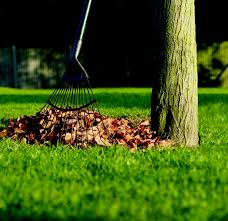 Leaves do fall! Yes they do. But what are you doing with them? Most folks will bag them, take the bag to the curb and let the city take them away to destinations unknown. What they really do is make compost out of them to save room in the landfill. A noble endeavor to be sure but, you can save some of the bagging and trips to the curb if you reuse what Mother Nature has provided. This is not an effort to undermine a city’s recycling programs. This is an effort to make use of the resources that we have available. All that is required is a small amount of your energy and a mulching mower. Considering that it can take whole leaves as long as 2 years to decompose, the mulching mower is kind of critical.
Leaves do fall! Yes they do. But what are you doing with them? Most folks will bag them, take the bag to the curb and let the city take them away to destinations unknown. What they really do is make compost out of them to save room in the landfill. A noble endeavor to be sure but, you can save some of the bagging and trips to the curb if you reuse what Mother Nature has provided. This is not an effort to undermine a city’s recycling programs. This is an effort to make use of the resources that we have available. All that is required is a small amount of your energy and a mulching mower. Considering that it can take whole leaves as long as 2 years to decompose, the mulching mower is kind of critical.
If it sounds like I’m asking everyone to start a compost pile, I’m not. But if composting looks like a good idea, then by all means, start composting. What I’m talking about is using the fall leaves for something other than city compost. Once leaves have been mulched they make a fantastic soil amendment. For bare areas in the lawn, work 4 or 5 inches of mulched leaves into the soil with a little molasses or high nitrogen fertilizer. Then, cover the area with another 4 to 5 inches of mulched leaves. Come spring it will be ready for seed or sod. 4 – 6 inches of mulched leaves also work well as a pathway material and for frost protection in gardens. When preparing the garden for the next crop, just turn (or till) the pathway into the soil. Need some good organic material in the annual color bed or extra mulch in a flower bed? You guessed it, mulched leaves.
If you have 2 red oaks in the front yard and two Chinese Pistache in the back yard then you will have lots of leaves in lots of bags. But if you try reusing the fallen leaves, then maybe you will have 6 bags instead of 10. To read more about ways to manage the fallen leaves, click here.





